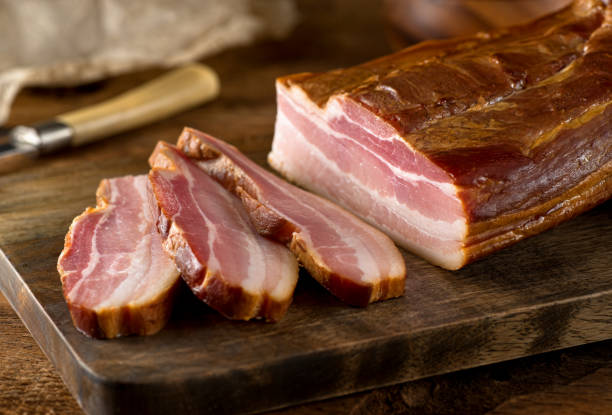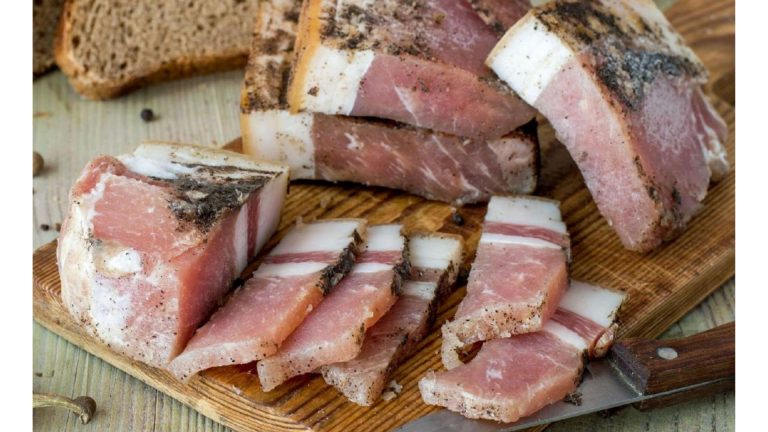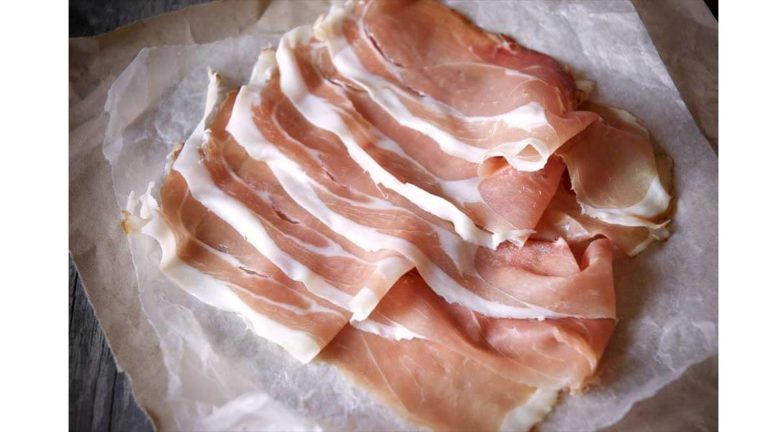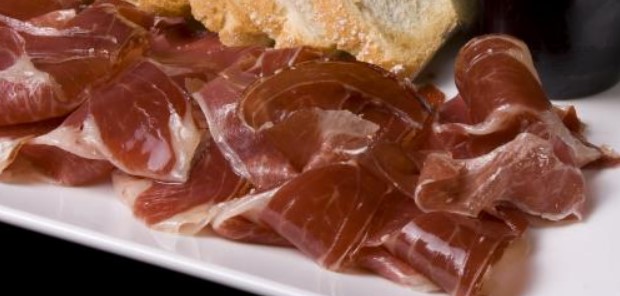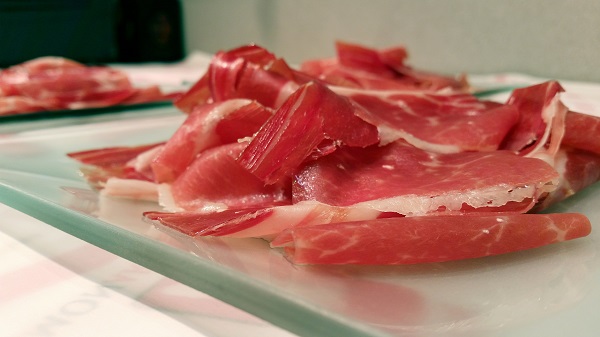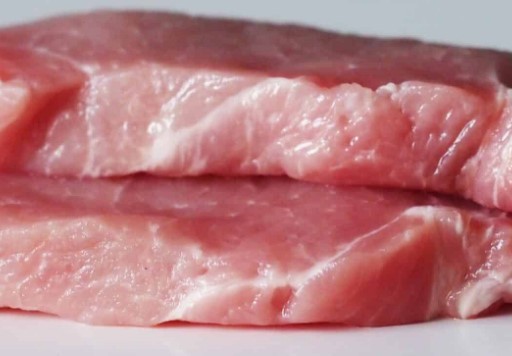White Mold on Prosciutto. Is it Still Good to Eat?
White mold is a naturally occurring fungus that often forms on a wide variety of food products during their ripening process.
If white mold is present on the surface of prosciutto or any other cured meat product it can cause illness.
The presence of white mold on meats does not necessarily mean that the meat is unsafe to eat, but the mold is a sign that the product has been stored incorrectly.
Therefore, the mold must be removed before eating.
You probably won’t see a lot of it as long as the food is fresh, but some folks are more paranoid about its presence than others.
Many people who love ham have heard of prosciutto and are intrigued by its flavor and tenderness.
Prosciutto is made from a pig’s hind legs, and the natural skin and hair provide an ideal surface for mold growth.
Mold is often an enemy to all types of food. While mold growth can be caused by bacteria, it often results in unsightly appearances on the surface of products.
In this article, we will provide more information on the various types of molds, their causes, and how to prevent the growth of these unwanted and damaging organisms.
Table of Contents
What is the White Mold on Prosciutto?
The Italians started selling prosciutto as a method of preserving meat to get it to market faster before the use of refrigeration.
Prosciutto is known for its elegance, flavor, and budget-friendliness while also providing considerable cuisine versatility.
It’s a great addition to many dishes as it adds a tangy, fresh flavor. White mold is a microscopic fungus that grows with a thread-like appearance.
The mold spores grow on fruit and vegetables, especially soft fruit like strawberries.
Fungi are a class of microorganisms that can be single-celled, unicellular, multicellular, or filamentous.
In addition to the fungal spores that are typically dispersed by the wind, water, or rain, a variety of terrestrial and aquatic fungal species are commonly encountered in the environment.
Prosciutto is a type of dry-cured meat that comes from pigs. It is produced by curing and air-drying thinly sliced or chopped pork for several weeks.
While this process takes place in a smokehouse, the resulting prosciutto does not need to be smoked.
Salting is a common technique used in cooking.
It can be used to add flavor to food, but also draw out moisture which makes for a crisper texture.
However, there are some caveats with salting that may not be worth it if you have specific needs.
Can You Eat Moldy Prosciutto?
It’s okay for prosciutto to have white fluffy mold on its surface as long as it doesn’t smell bad or taste bad.
Mold on food isn’t a concern as long as it doesn’t have a bad smell or taste.
The reason why white mold ruins prosciutto is that it is the fungus Penicillium notatum.
It is a type of mold that causes the growth of fungal strands on the surface of the meat.
Mold can sometimes be a bit of a mystery – but you can use all sorts of tools to figure out if that piece of prosciutto is safe for you to eat. Some are easy to spot.
One of the best ways to flavor your prosciutto is to let it age for 6 months. The longer you age your prosciutto, the better it will taste.
The longer it ages, the less moisture it loses and the more salt it absorbs from the air.
Prosciutto is the most well-known example of dry-cured meat, which means that it’s cured with salt.
As such, it’s important to understand how prosciutto is produced.
How Do You Remove the Mold From Prosciutto?
When you find white mold growing on your ham, do not panic! You can remove it without throwing out your ham.
First, cut away any moldy and dried-out pieces using a sharp knife.
Second, soak the ham in either white wine vinegar or lemon juice for at least one hour and then rinse it well.
To get the best results from your prosciutto, first, you want to make sure it’s in the correct conditions.
This means it should be dry and clean. White wine vinegar is the best way to ensure the prosciutto doesn’t pick up any unwanted odors.
As the last step, it’s important to use sharp kitchen scissors to cut away any moldy flesh.
Use the packaging of your sliced prosciutto as a guide to how much of it to trim away for optimal results.
This will keep the amount of potentially contaminated meat from being cut away during the slicing process.
Prosciutto is delicious when it is raw. It is very easy to cook. You can simply put it in the microwave and leave it for 30 seconds.
See also: Do you Need to Cook Prosciutto?
The prosciutto can be stored safely in a refrigerator. After being hung for about 4 weeks, it is ready to eat.
To maintain the appearance of the meat, the prosciutto must be refrigerated after being hung and it cannot be consumed until a month has passed.
How Long Does Prosciutto Last?
The label on your product may not tell the exact expiry date of your prosciutto as sometimes it will last long or sometimes it will not, but there are some ways to extend its shelf life.
Refrigeration, or freezing in your freezer for several days or months can extend the time it lasts by up to six months.
Once the package is opened, it must be consumed within a short period, usually one week. This is a necessary step to ensure the safety of the product.
I’ll eat the prosciutto in a couple of days. I’d keep the ham in the fridge for less than a week because it will start to dry out and lose its flavor.
You can do much more with a small piece of meat than you can with a huge chunk of beef or a slab of pork.
Prosciutto, which comes from the hind legs of the pig, is aged for anywhere from 12 to 13 months.
So long as it isn’t exposed to light, it can last for well over a year. If you store it properly it can last for over a year.
Conclusion
White mold on prosciutto can be a bit of an eyesore, but it’s a natural part of the aging process for cured meats.
However, it can reduce your prosciutto’s visual appeal and distort its taste.
White mold isn’t good for you to eat, but if only the surface is affected, it’s easy to remove before serving.
You can remove it with salt, water, lemon juice, or white wine vinegar.
If the white mold has penetrated too deep into the meat, no matter how much you try to cut away at it, there will be some contamination that can’t be removed.
In this case, you may want to throw out the entire piece of prosciutto.

Foodie and a passionate cook, I am here to share all of what I know about cooking, kitchen, and food prepping.
Follow me for delicious and healthy recipes.

